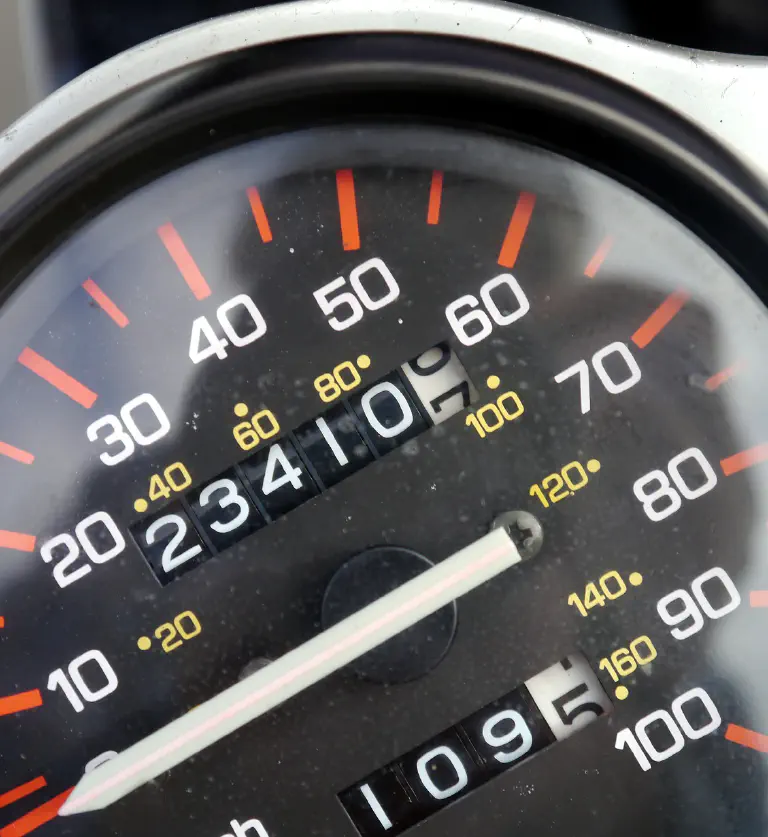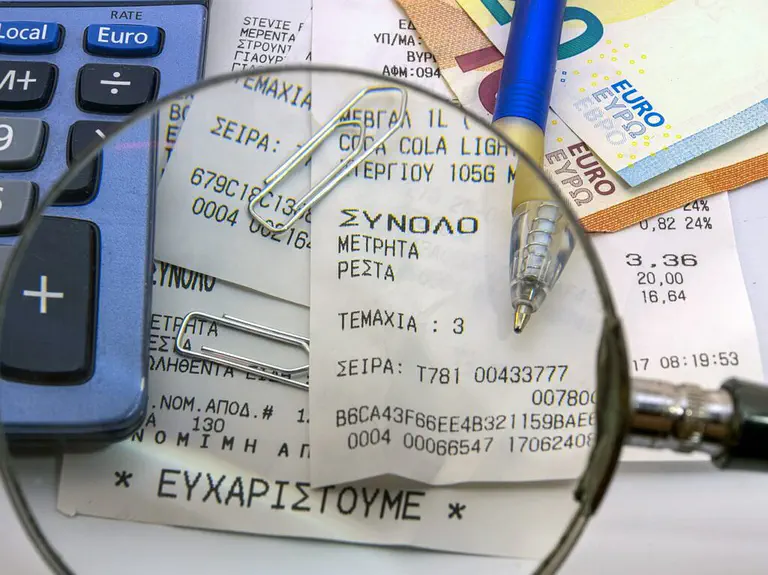How to turn your logbook into a tax advantage #
At first glance, a logbook may appear to be just a simple record of distances traveled. But for many drivers, it is of far greater importance. Whether for self-employed people with their own company car or entrepreneurs with employees who use a company car - the logbook not only serves to document the distances driven, but also brings tax advantages.
While it is not generally mandatory to keep a logbook, the tax office or another authority may require it in certain cases. In addition, a properly kept logbook helps to avoid the so-called 1% rule and provide clear evidence of the proportion of private and business journeys. A logbook can therefore be worthwhile for you even if it is not mandatory.
This article shows you what you need to bear in mind when keeping a logbook and provides an informative overview of the most popular tools for digital logbook management.
Whether logbook or 1% rule makes more sense #
What is the 1 percent rule for company cars? #
The 1 percent rule is a flat-rate taxation method for company cars that the tax office offers in order to easily calculate the non-cash benefit of a privately used company car. This means that one percent of the gross list price of your vehicle in Germany is taxed monthly as a private use benefit. This applies regardless of how often you actually use the car for private or business purposes.
Whether a logbook or the 1% rule is more worthwhile for your company car depends largely on the type of use by the driver. A helpful rule of thumb says: If you use the company car for both private and business purposes, flat-rate taxation is usually the cheaper and simpler choice.

When a logbook is worthwhile #
The situation is different if you use the car privately less than half of the time. In this case, a logbook can be an advantage. By documenting in detail when and for what purpose you use the vehicle, you can prove to the tax office exactly what proportion of your journeys is private and what is business. In this way, you can only declare the actual private use and possibly significantly reduce the non-cash benefit that you have to pay tax on. Ultimately, the drivers of the company cars bear the expense, even if they cannot claim their own tax deductions. However, if the car is mainly used for business purposes, this can be financially worthwhile for the company in the long term.
Note: If you document the use of a company car with a logbook, it is unfortunately not possible to switch to the flat-rate 1% method in the current year - and vice versa. The chosen method then remains binding for the whole year.
Legal requirements and what you need to consider #
If you also use a company car privately, it is important to document every journey conscientiously in order to properly pay tax on the non-cash benefit. Prompt recording is essential: ideally, you should write down the details immediately after each journey or at the end of the day at the latest. In this way, you can avoid errors and manipulation and always keep track of your journeys.

A logbook that meets the requirements of the GoBD (principles of proper accounting) requires the following information to be documented for business trips:
- Date, time and mileage: Make a note of these points at the beginning and end of each business trip.
- Destination and purpose of the trip: Make a note of where you went and why. If you take a detour, you should also record the route you took.
- Business partners or customers: If you had a business appointment, you should note the name of the person in question.
For private journeys, it is sufficient to state the kilometers driven. Journeys between your home and place of work only require a brief note, as they take place regularly and no further details are necessary. By carefully documenting your journeys, you not only satisfy the tax office, but also keep track of the use of your company car yourself.
What the tax office looks for in your logbook #
Logbooks are closely scrutinized by tax authorities, as they form the basis for tax deductions and the distinction between private and business use of company vehicles. The tax authorities not only check the entries in the logbook itself, but often also compare them with other receipts such as fuel bills and maintenance logs. For example, your fuel receipt from a certain city must match the journeys recorded in the logbook. Otherwise, the tax office could question the plausibility of your details.

Even small gaps or inconsistencies, such as an unclear distinction between business and private journeys, can be problematic. If the tax office becomes aware of such errors, it can reject the logbook and automatically apply the 1% rule. This flat-rate taxation is usually more expensive and is at the expense of the vehicle owner. Care is therefore particularly important when keeping a logbook.
When keeping the logbook, whether handwritten or digital, the principle of traceability applies. Subsequent changes must under no circumstances cover up traces or obscure the original entries. In a handwritten logbook, this means that you may only cross out incorrect entries so that they remain legible - the use of Tipp-Ex or similar means is prohibited. In an electronic logbook, all changes must be logged in order to ensure a complete history of journeys at all times.
Analog vs. digital - which logbook is more worthwhile for you #
Whether an analog or digital logbook is right for you depends on your individual preferences and requirements. Both variants offer specific advantages, but also disadvantages, which you should weigh up depending on the use and purpose of the logbook.
Analog logbook #
The analog logbook, i.e. the classic handwritten record, has advantages above all due to its independence and simplicity. It can be accessed at any time (independent of a technical device) and does not require a power source or internet connection. This option is often cost-effective, as you only need to purchase the logbook itself. An analog logbook is therefore particularly suitable for occasional users or people who only have low documentation requirements.
However, the disadvantage of the analog logbook is that it is more time-consuming, as you have to enter every journey manually. This manual effort also increases the susceptibility to errors: illegible handwriting, missing information or forgotten entries can quickly render the logbook unusable. There is also a risk that your logbook will be damaged or completely lost due to everyday wear and tear and the effects of the weather.

Keeping a digital logbook #
Digital logbooks are becoming increasingly popular as they offer a convenient and modern alternative. A clear advantage of digital logbooks is that they cannot be lost or damaged, which is a problem with physical logbooks. As digital solutions are usually based on cloud technologies, your data is stored securely and can be accessed online at any time. In addition, digital logbooks are often equipped with analysis tools that allow you to precisely evaluate the routes driven and usage patterns . For example, you can evaluate and track the kilometers driven in connection with the purpose of use.
Data protection is a frequently discussed aspect of digital logbooks. Strict regulations apply here, especially if you process personal data. Good digital systems encrypt and anonymize your data and thus meet the requirements of the General Data Protection Regulation (GDPR). Another point is the cost: digital logbooks are usually associated with ongoing subscriptions and the costs for software or apps can vary depending on the scope of the functions. In practice, however, the added value in terms of time saved and precise data analysis can often offset these costs.
Comparison of digital logbooks from Vimcar, Excel and SeaTable #
If you want to keep a logbook, there is now a wide range of digital solutions, from practical apps to comprehensive software. The market offers both fully automatic versions and alternatives with manual entry - there is something for every need and every budget. We have put some of the most popular tools through their paces for you. We focused on the criteria of ease of use, legal security, data protection, costs, analysis functions and the manual effort required.
Vimcar logbook #
Vimcar is a digital logbook software specially designed for companies and the self-employed who require complete and legally compliant documentation. With user-friendly functions such as automatic trip recognition and categorization as well as seamless integration into existing workflows, Vimcar makes it easier to manage the logbook.
- Ease of use: High ease of use, user-friendly app and simple handling
- Legal certainty: legally secure and recognized for tax purposes
- Data protection: Data is stored encrypted in the cloud
- Costs: Ongoing costs through monthly subscription from €13.90 per month/vehicle
- Analysis function: Extensive analysis functions
- Manual effort: Minimal effort due to automated recording
Note: If you already use Lexware as your accounting software, you can use Vimcar’s logbook via Lexware, as both companies cooperate with each other.

Logbook with Excel #
If you create your logbook using an Excel template, this is inexpensive and flexible, but requires a lot of manual effort and involves tax uncertainties. While this method may be suitable for internal purposes, it is usually not recognized by the authorities. The reason for this is the lack of a tamper-proof change history, which prevents entries from being manipulated retrospectively. This is an important point that often disqualifies Excel as a tax-compliant logbook.
- Ease of use: Flexible, but without a ready-made interface
- Legal certainty: Not legally certain, as the lack of a change history can lead to manipulation
- Data protection: Local storage, data protection-friendly, but without encryption
- Costs: No additional costs for Microsoft 365 users, as Excel is already available
- Analysis function: Flexible, but analysis only possible with a great deal of personal effort
- Manual effort: Very high manual effort, as completely manually managed
Free template: Keep a digital and efficient logbook with SeaTable #
If you’re looking for a logbook app that’s free and makes your day-to-day work easier, SeaTable is an excellent choice. SeaTable offers a flexibly customizable logbook template , allowing you to record your journeys digitally and manage them conveniently online.
SeaTable scores highly in terms of data protection and offers you the choice between cloud and on-premises hosting , so you can decide for yourself where you store your data. Another advantage: entries can be entered quickly and easily using the integrated web form. This form can request all the necessary information, including a digital signature, which makes the process particularly efficient and secure.
A particular highlight is the option of generating a QR code directly in SeaTable, which you can attach to your company vehicle, for example. This allows you to conveniently access the web form for the logbook at any time. SeaTable also enables simple analyses and evaluations so that you can precisely track the use of your vehicle.
After submitting the form, drivers no longer have access to their entries and therefore cannot make any subsequent changes or manipulations. Although you have the option of making adjustments directly in the table, all changes are logged in detail and thus remain traceable at all times.
- Ease of use: Flexible, with ready-made template incl. web form
- Legal certainty: Legally secure with change history
- Data protection: GDPR-compliant, cloud or on-premises, server location in Germany
- Costs: Free basic version, more functions from €7 per month/user
- Analysis function: Comprehensive analysis with little effort
- Manual effort: Moderate effort due to manual entry in the form
Note: With SeaTable you can not only keep an individual logbook, but also efficiently manage your entire fleet .
If you would like to use SeaTable’s digital logbook, simply register and start with the free template.
Frequently asked questions #
Do I have to document every journey?
What must be included in a logbook?
The following details must be fully documented in a logbook for each journey:
- Date of the trip
- Time at the start and end
- Mileage at the start and end of the trip
- Destination and purpose of the trip
- Name of the business partner or customer (for business trips)
What happens if I lose my logbook?
If you lose your logbook, the consequences depend on whether you were obliged to keep it:
If you are obliged to keep a logbook: The loss will result in a fine of 100 euros. In addition, the logbook requirement may be extended, as the logbook can no longer be presented.
If you have a voluntary logbook for the tax office: In this case, the 1% rule applies, which often leads to higher costs, as private use is taxed at a flat rate.
Is the 1% rule or the logbook more favorable?
What are the advantages of a logbook?
In summary, it can be said that a logbook for company cars offers advantages above all if the private use of the vehicle is low and the effort that a logbook entails seems justified.
The digital alternatives make the logbook accessible online and simplify administration considerably, which makes them particularly attractive for companies and the self-employed who are looking for precision and efficiency.
The ability to document journeys in detail and with legal certainty allows you to make the most of tax benefits while maintaining a clear overview of your vehicle use.
